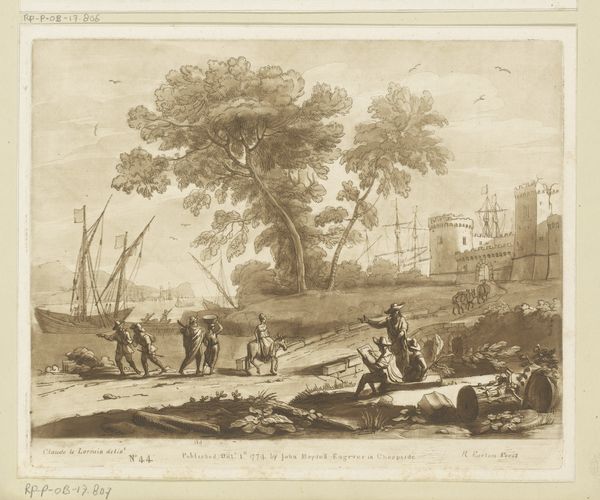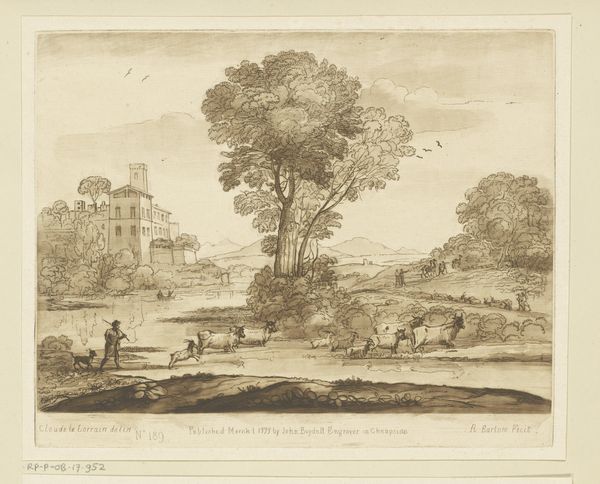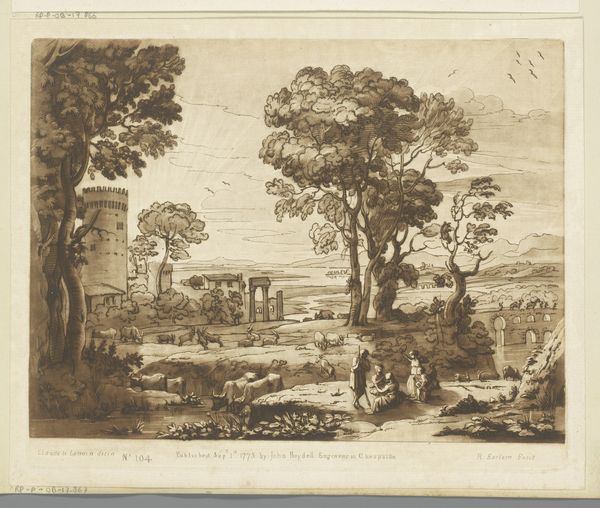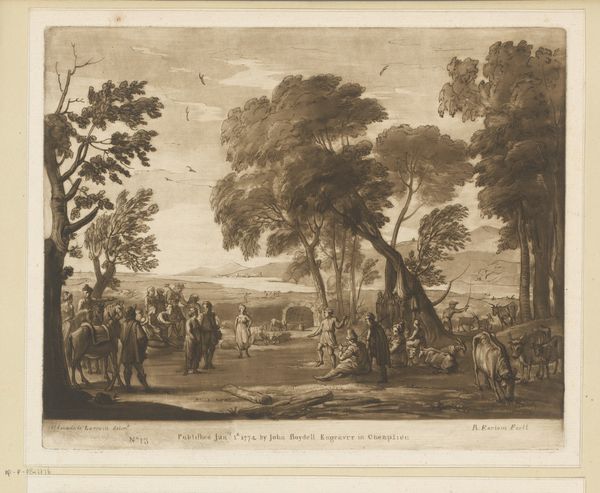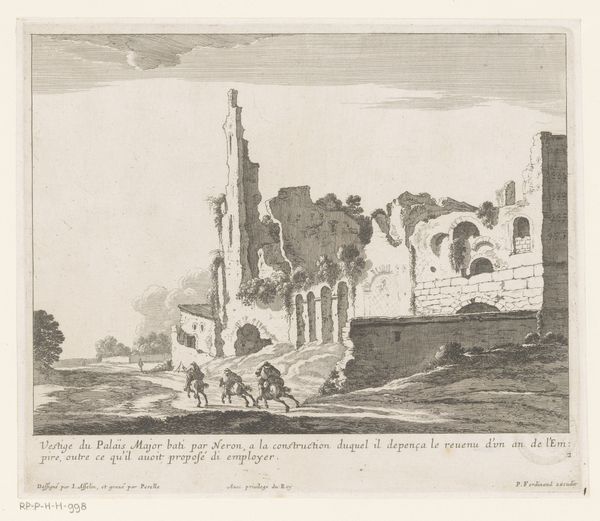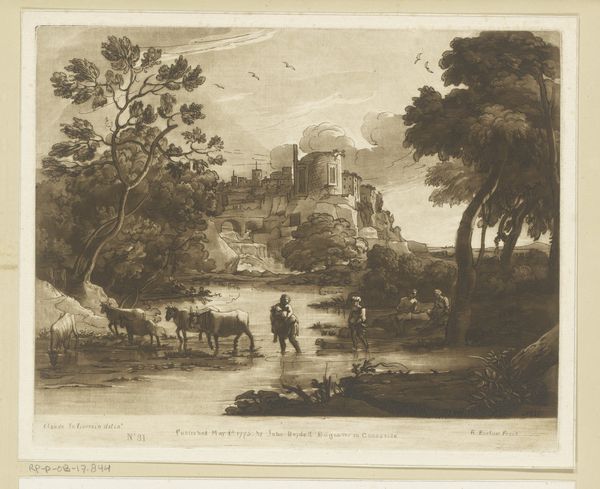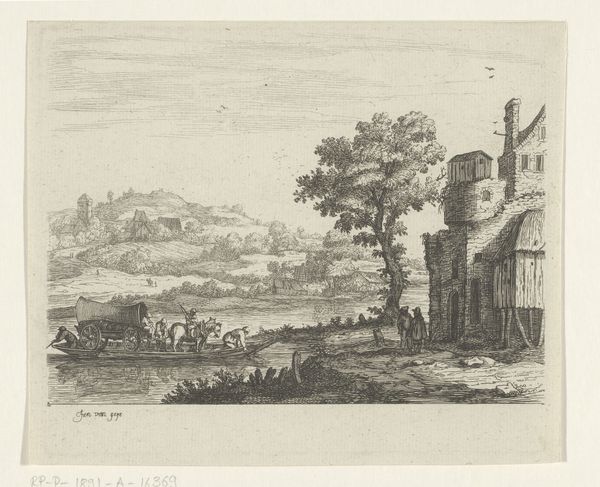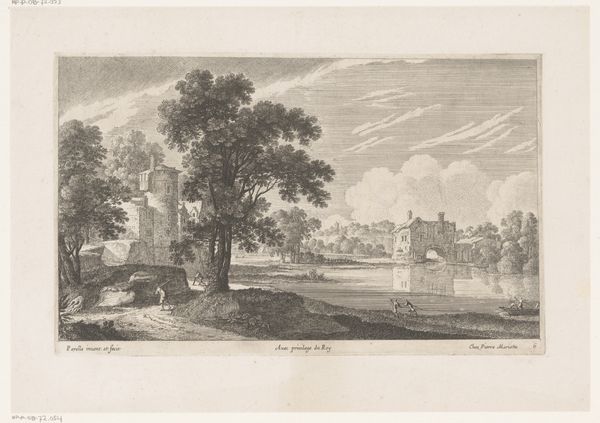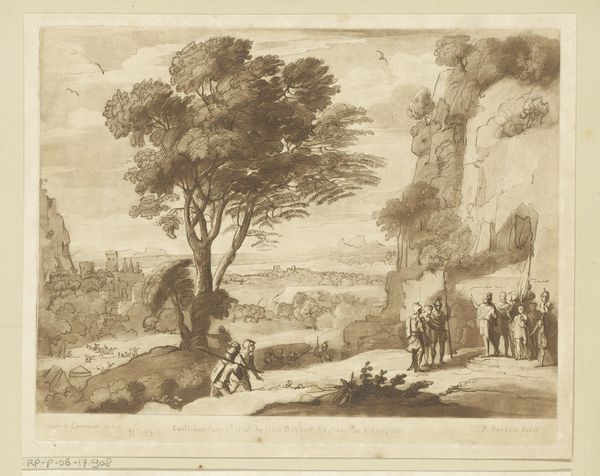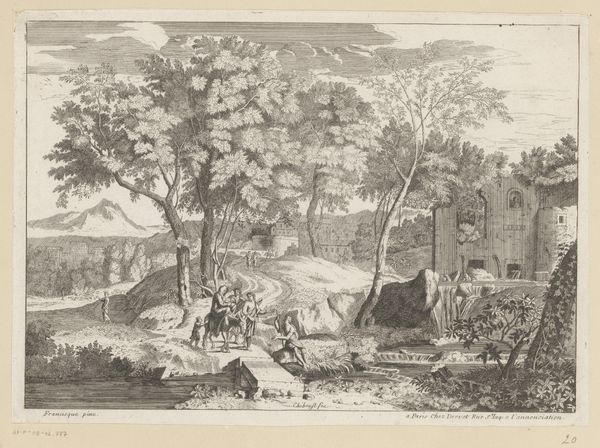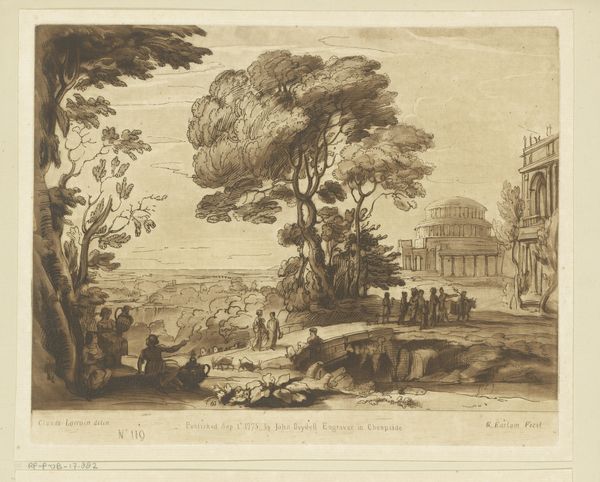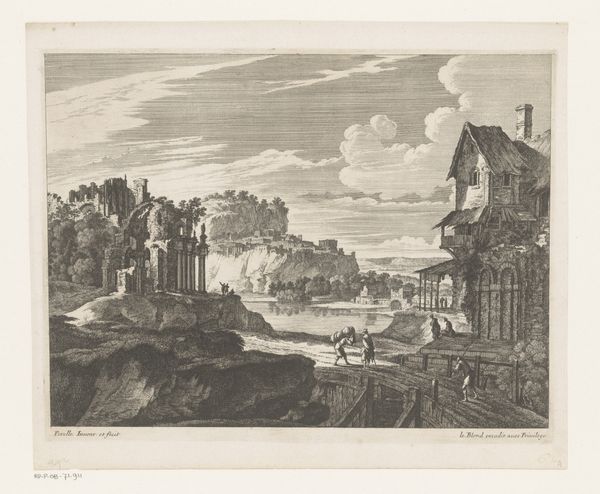
Kustgezicht met ruïne en Apollo met de Sibille van Cumae Possibly 1775
0:00
0:00
richardearlom
Rijksmuseum
print, etching, paper, engraving
#
neoclacissism
# print
#
etching
#
landscape
#
paper
#
history-painting
#
engraving
Dimensions: height 207 mm, width 258 mm
Copyright: Rijks Museum: Open Domain
Richard Earlom created “Kustgezicht met ruïne en Apollo met de Sibille van Cumae” using an etching technique. At first glance, the sepia tones evoke a classical world, a tranquil scene where ruins meet the sea. Notice how the composition is structured by the strong verticals of the decaying architecture on the left, balanced by the softer, organic lines of the trees on the right. Earlom plays with depth, layering the foreground figures with the distant cityscape, creating a journey for the eye. The use of line is particularly striking; it's not just about depicting form but about creating texture and atmosphere, almost like a stage set. What’s fascinating here is how Earlom uses ruins as a form of semiotic language. The crumbling structures aren't just remnants of the past, they become signs that suggest the transience of power. It challenges our understanding of time and memory, reflecting the 18th-century obsession with classical antiquity but through a lens of decay. The artwork destabilizes any fixed notion of historical grandeur, inviting us to contemplate the passage of time and its impact on cultural symbols.
Comments
No comments
Be the first to comment and join the conversation on the ultimate creative platform.
